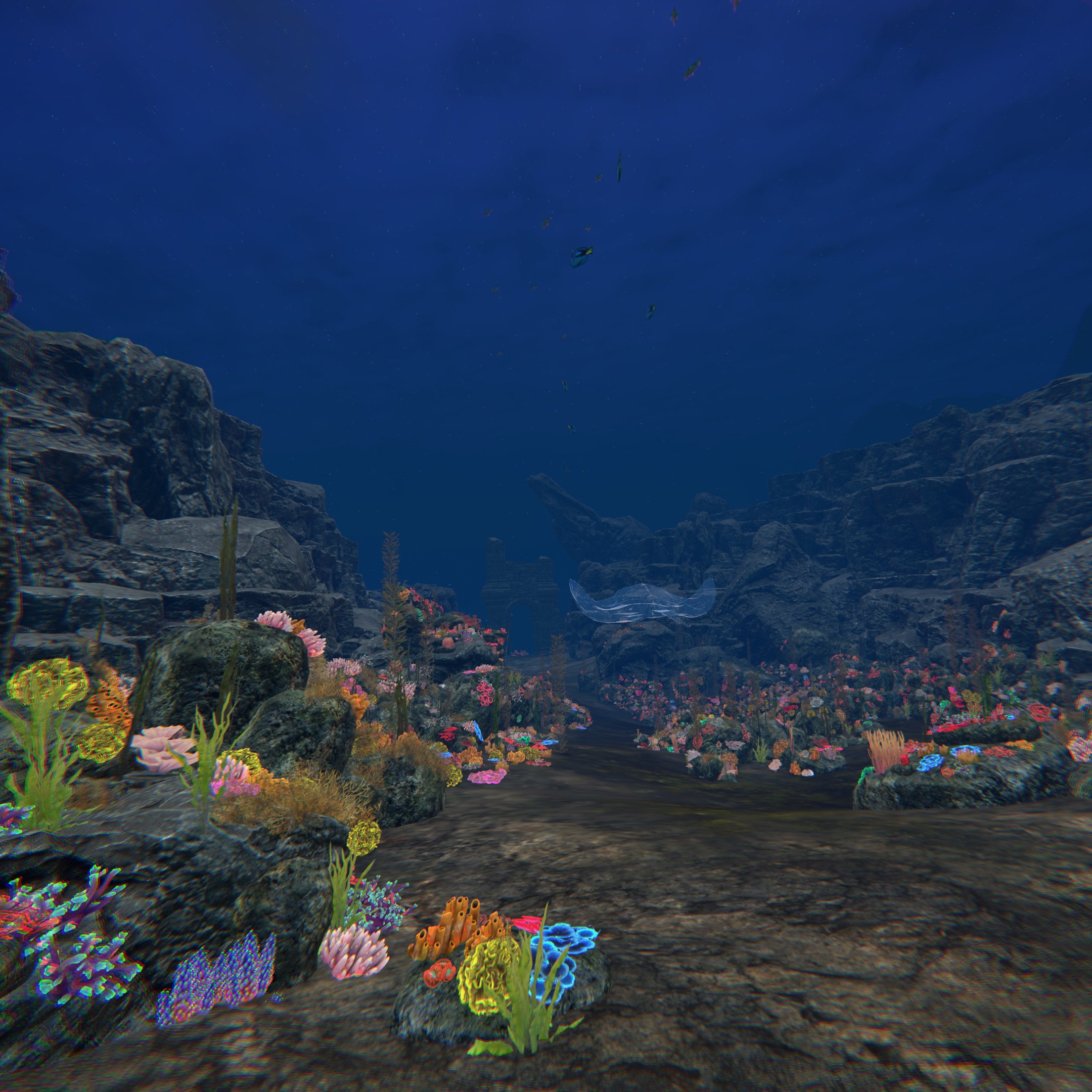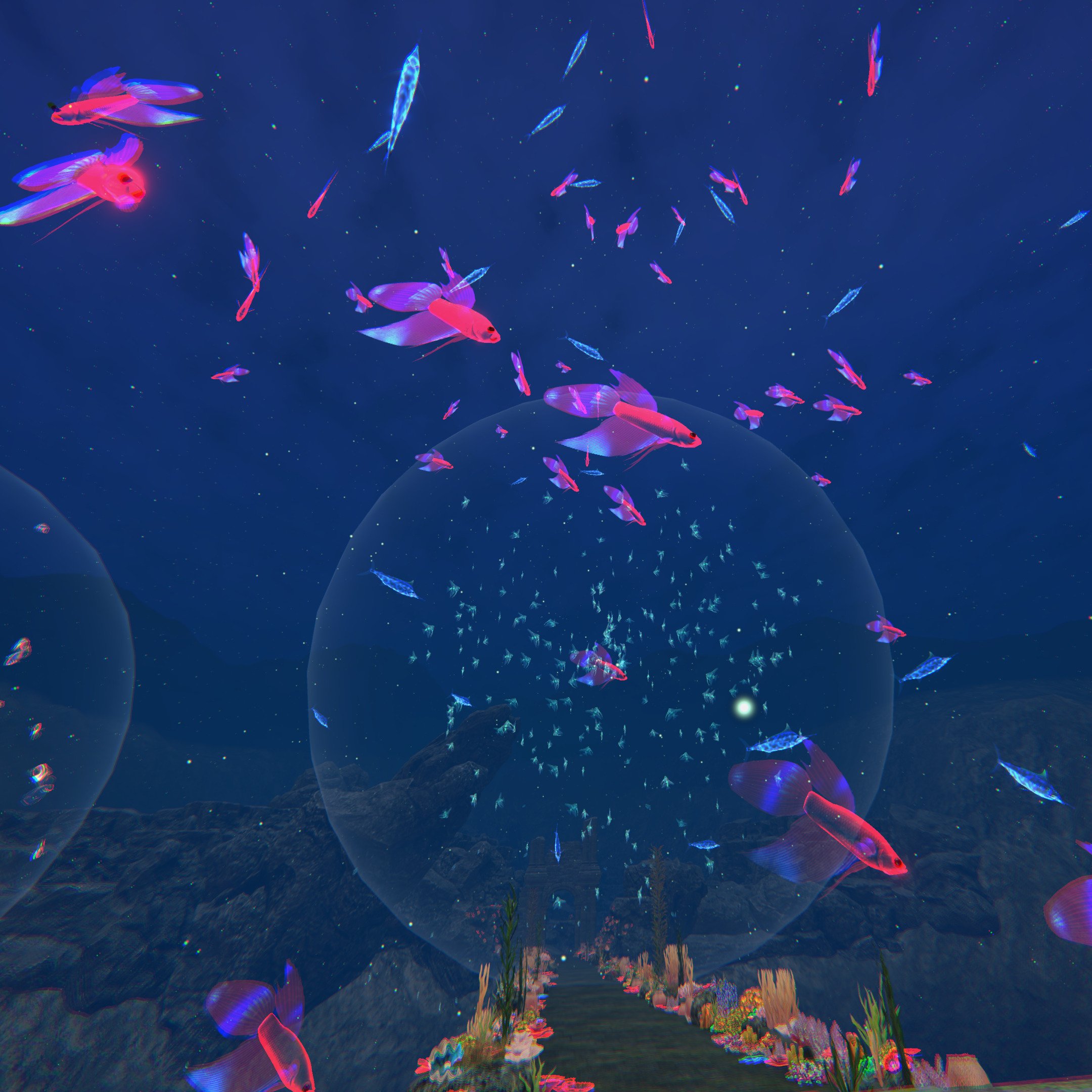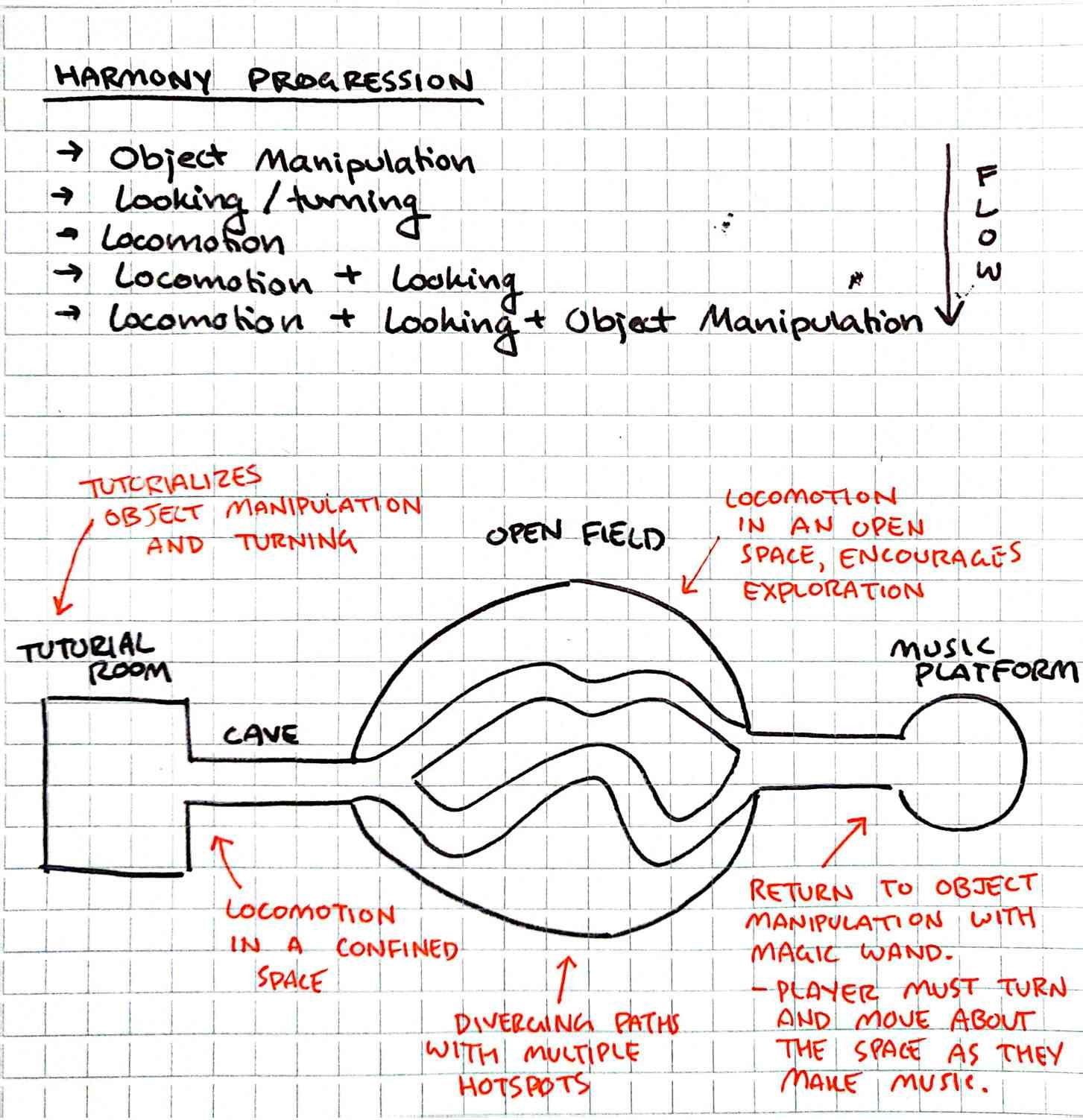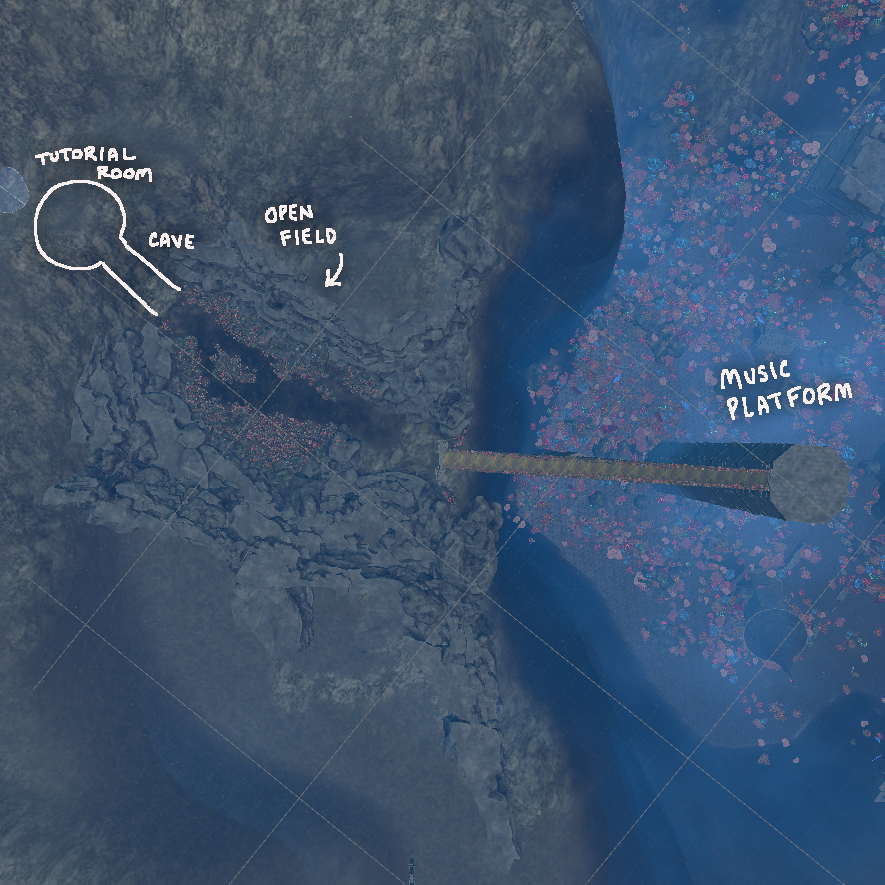Harmony: Ocean Conductor VR
Harmony is an immersive VR experience in which the player explores a serene underwater environment where they are given the magical ability to conduct music using schools of fish. The game was built using Unity 3D and the XR Interaction toolkit, alongside a team of 4 classmates over the course of 2 months.
SFU IAT 445 - Immersive Environments, Spring 2023. Professor Steve DiPaola.
Download on Itch.ioStephen Kerschbaumer: Lead Programmer, Game Designer, BOIDs Engineer
Gabriel Kwong Kai Qian: Game Director, Technical Director, Programmer
Yiming Zheng: Environmental Artist, Technical Artist
Rohan Samuel: Music, UI Designer, Audio Engineer
Emmanuel Navas Castro: Visual Designer, VFX, Graphic Designer


Design Philosophy
Something I find very important when designing a project is flow. As this was a project intended to be presented in a public showcase, where anyone from the public could play it, we needed to create an experience that would be engaging for all skill levels. VR is something that can take time to get used to, so I wanted the user to control the pace with which they navigate the experience, allowing for them time to acclimate to the controls and interface. The game's systems develop as the player chooses to progress through the space, with each area encouraging the user to engage more with the core mechanics of the game.


I believe this strategy proved to be highly effective in the end, as we produced a game that even those entirely unfamiliar with VR could play comfortably. We observed those that were new to VR enjoyed pacing themselves as they moved through the space, while those who were experienced with VR were immediately familiar with the controls moved straight through the experience at a steady pace.
Iterative Process
As both a developer and designer, I understand the importance of rapid prototyping, and spent a considerable amount of time integrating features that never saw the light of day. Despite this, the effort was never wasted. We took time to test all of these mechanics (internally and externally), and only picked those that felt the best built upon our intended user experience.
Reflection
Ultimately, I believe this approach led to us creating a truly impressive project despite the limitations of this being a class project with a constrained development time. Instead of making a proof of concept, we built a highly-manicured and refined vertical slice that can easily be built-upon and expanded, but still stands on its own as a powerful experience. Were I to have more time, there are a number of features I would have liked to add, such as responsive tutorialization and clearer interaction prompting.
You can find-out more about the project on our website.